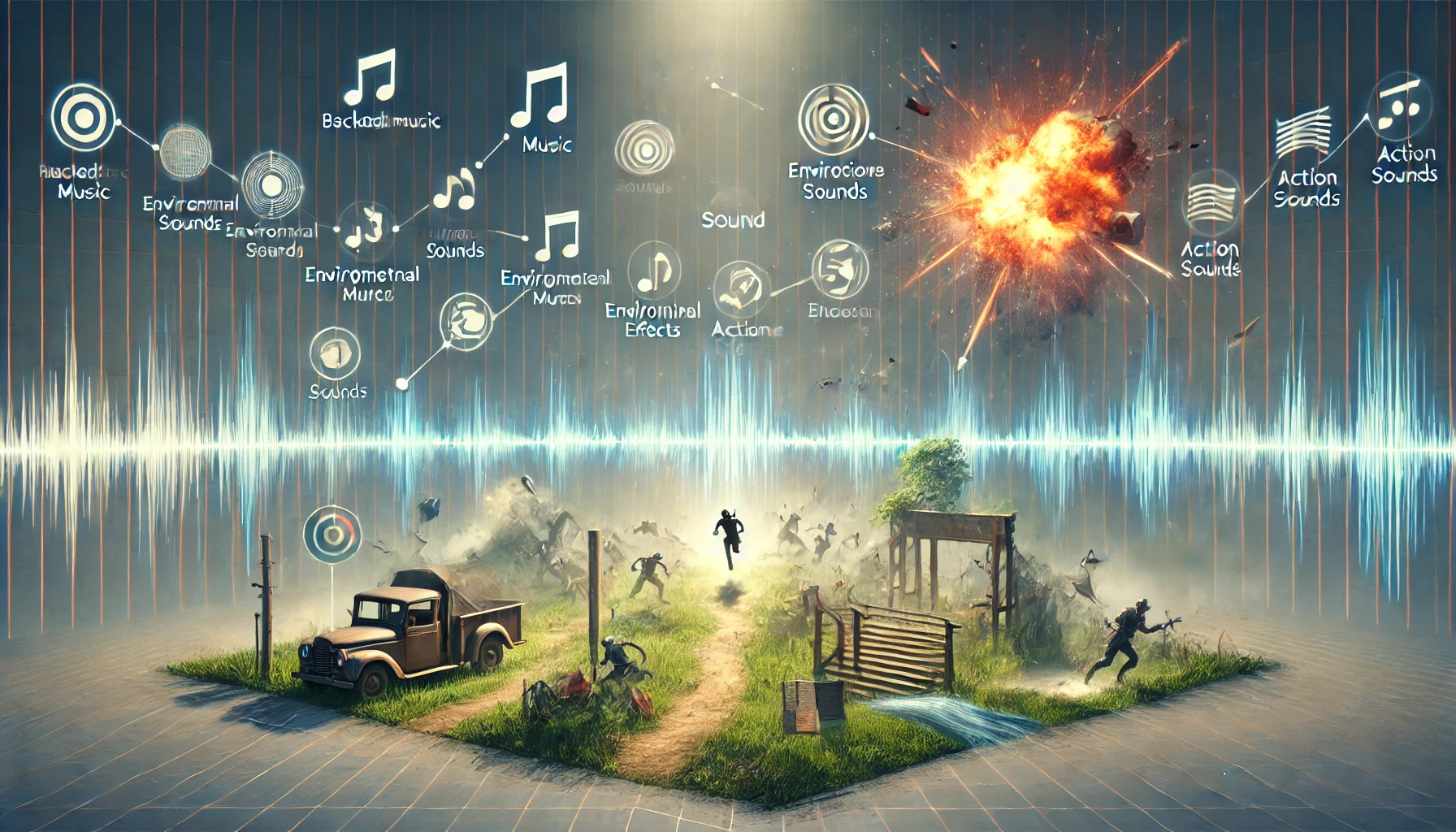
Sound – The Soundtrack and Effects of Immersive Gameplay
Sound is often the unsung hero in game development. It’s the element that players might not always consciously notice, but they certainly feel it. Much like in films, the right sound design can transform a scene, elevating gameplay from a purely visual experience to something deeply immersive and emotional.
Sound as the Heartbeat of Immersion
In any game, sound is what brings the world to life. Imagine walking through a dense forest in a game: the sound of rustling leaves, distant animal calls, and the crunch of footsteps all work together to build a sense of place. Or consider a fast-paced action scene—without the roar of explosions, the rapid fire of weapons, or the dynamic soundtrack pushing the intensity, the scene would fall flat.
Sound creates atmosphere. Whether it’s the unsettling creaks of an abandoned house or the triumphant score during a heroic moment, sound shapes the emotional tone of a scene. It tells the player how to feel, guiding them subtly through the story without the need for visual cues. A game without sound might still be playable, but it would lack the emotional depth that makes it truly memorable.
The Role of the Sound Engine
In games, the sound engine is what manages all audio elements—ensuring that everything you hear is played at just the right moment and in just the right way. Whether it’s background music swelling at a climactic point or a character’s voice ringing out during dialogue, the sound engine ensures that each piece of audio is perfectly synchronized with what’s happening on screen.
Sound is positional in games, which means that the sound engine also handles where sounds are coming from relative to the player. If you’re sneaking through a dungeon and hear footsteps approaching from the left, it’s the sound engine that ensures the audio feels spatially accurate. This gives the player an intuitive sense of their surroundings, even when they’re not looking directly at a sound source.
Dynamic Soundscapes
Unlike movies, games are interactive, meaning that sounds need to respond to player actions. In a fast-paced racing game, the sound of the car engine revving changes dynamically with the player’s speed and movements. In a role-playing game, the ambient sound of a marketplace might shift depending on the time of day or how many characters are present.
The sound engine works in real time, adjusting the audio landscape based on the player’s choices and the game’s changing environment. This creates a living, breathing soundscape that adapts to the gameplay and keeps the player fully immersed.
Music and Emotion
Music plays a critical role in setting the emotional tone of a game. Just like in movies, a game’s soundtrack can evoke excitement, fear, sadness, or triumph. Great soundtracks become inseparable from the game itself—players associate certain tracks with key moments, making those experiences unforgettable.
For example:
- In The Legend of Zelda, the iconic theme that plays as Link embarks on his journey creates a feeling of adventure and discovery.
- In Hollow Knight, the melancholic and haunting music adds to the game’s eerie, mysterious atmosphere, deepening the emotional experience.
The sound engine seamlessly blends the background music with the gameplay, ensuring that it rises and falls at the perfect moments—building suspense, releasing tension, and amplifying emotional beats.
Sound Effects: The Detail in Every Step
Sound effects are the small details that make a game world feel tangible. Every footstep, weapon swing, or rustle of fabric adds to the player’s immersion. It’s these tiny auditory cues that make a world feel alive and responsive. Without them, the game would feel hollow, and player actions would lack the weight and impact needed to be satisfying.
For instance:
- In The Last of Us, the sound of glass crunching underfoot as you creep through a dilapidated building adds to the tension, making the world feel real and dangerous.
- In Red Dead Redemption 2, the sound of a horse’s hooves on different surfaces (mud, gravel, wood) adds texture to the environment and gives weight to every interaction.
These small sounds are often layered on top of each other, creating a rich audio environment that fully immerses the player in the game world.
Dialogue and Storytelling
In games with a narrative focus, voice acting and dialogue play a key role in bringing characters to life. A great voice performance can convey emotion, personality, and depth in ways that visuals alone cannot. Whether it’s a heroic speech, a humorous quip, or a heartfelt confession, sound design makes sure that the dialogue hits all the right emotional notes.
The sound engine manages this, ensuring that dialogue is clear, synchronized with character animations, and spatially placed within the game world.
Final Layer of Magic
When done right, sound design adds the final layer of magic to a game. It’s what makes a game feel immersive on a sensory level. Sound can evoke emotions and memories, making each in-game moment more powerful and more personal. Without sound, even the most beautifully rendered visuals and complex gameplay mechanics can feel flat. But with it, a game becomes something greater than the sum of its parts—a truly unforgettable experience.